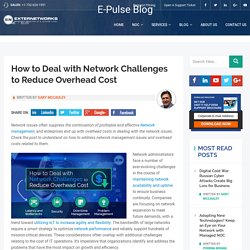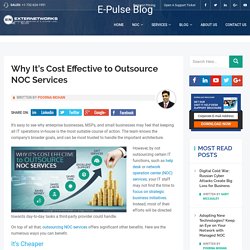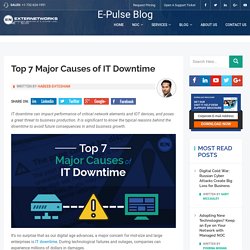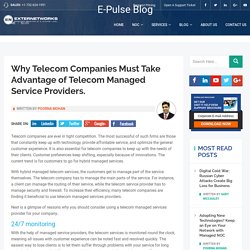

Akbar Shaik
ExterNetworks Inc. is a Managed Technology Service provider since 2001. We provide End-to-end solutions featuring Design, Deployment and 24/7 IT support.
Evaluating Network: Perform Network Optimization. Assess Your Networking Needs Understanding what your network is designed to do is the most important step in optimizing network performance.

It’s the groundwork that everything else is built upon, and even when working on an already existing network this is a critical step to ensuring smooth operation. What is this network used for? What kind of bandwidth is needed? What kind of hardware will help achieve this data-transfer target? Analyze the Network After answering the above questions, it’s time to look at the network itself, both at a hardware and software level. Go through each device and make sure it’s using proper cabling that is able to handle the tasks given to it. On the same token, old devices should be checked for old or outdated firmware. Evaluate bottlenecks This is where a topology map will really help create a smoothly operating network.
Additional software can also help nail down areas of your network where slowdowns are affecting performance. How to Deal with Network Challenge to Reduce Cost. Network issues often suppress the continuation of profitable and effective Network management, and enterprises end up with overhead costs in dealing with the network issues.

Check the post to understand on how to address network management issues and overhead costs related to them. Network administrators face a number of ever-evolving challenges in the course of maintaining network availability and uptime to ensure business continuity. Companies are focusing on network expansion to meet future demands, with a trend toward utilizing IoT to increase agility and flexibility. The bandwidth of large networks require a smart strategy to optimize network performance and reliably support hundreds of mission-critical devices. These considerations often overlap with additional challenges relating to the cost of IT operations. Latency and Bottlenecks The evolution of virtualization has been driving network modernization and transforming data centers. Security. Why It's Cost Effective to Outsource NOC Services. It’s easy to see why enterprise businesses, MSPs, and small businesses may feel that keeping all IT operations in-house is the most suitable course of action.

The team knows the company’s broader goals, and can be most trusted to handle the important architecture. However, by not outsourcing certain IT functions, such as help desk or network operation center (NOC) services, your IT staff may not find the time to focus on strategic business initiatives. Instead, most of their efforts will be directed towards day-to-day tasks a third-party provider could handle. On top of all that, outsourcing NOC services offers significant other benefits. Here are the numerous ways you can benefit. It’s Cheaper Cutting costs so you can boost your bottom line and pass savings to clients is important for any enterprise, MSP, or small business.
A good way to reduce this labor cost is to outsource certain daily tasks, like NOC monitoring. Top 7 Major Causes of IT Downtime. IT downtime can impact performance of critical network elements and IOT devices, and poses a great threat to business production.

It is significant to know the typical reasons behind the downtime to avoid future consequences in amid business growth. It’s no surprise that as our digital age advances, a major concern for mid-size and large enterprises is IT downtime. During technological failures and outages, companies can experience millions of dollars in damages. Technology marketing research company Infonetics Research recently conducted a survey regarding IT downtime for large, medium and small businesses.
How to Deal with Network Challenge to Reduce Cost. Why Telecom Companies Must Take Advantage of Telecom Managed Service Providers. Telecom companies are ever in tight competition.

The most successful of such firms are those that constantly keep up with technology, provide affordable service, and optimize the general customer experience. It is also essential for telecom companies to keep up with the needs of their clients. Customer preferences keep shifting, especially because of innovations. The current trend is for customers to go for hybrid managed services. With hybrid managed telecom services, the customers get to manage part of the service themselves. Next is a glimpse of reasons why you should consider using a telecom managed services provider for your company. 24/7 monitoring With the help of managed service providers, the telecom services is monitored round the clock, meaning all issues with customer experience can be noted fast and resolved quickly. Resolving of issues with your IT Infrastructure Such services will monitor your IT infrastructure, take note of events, and even offer solutions.
Conclusion.